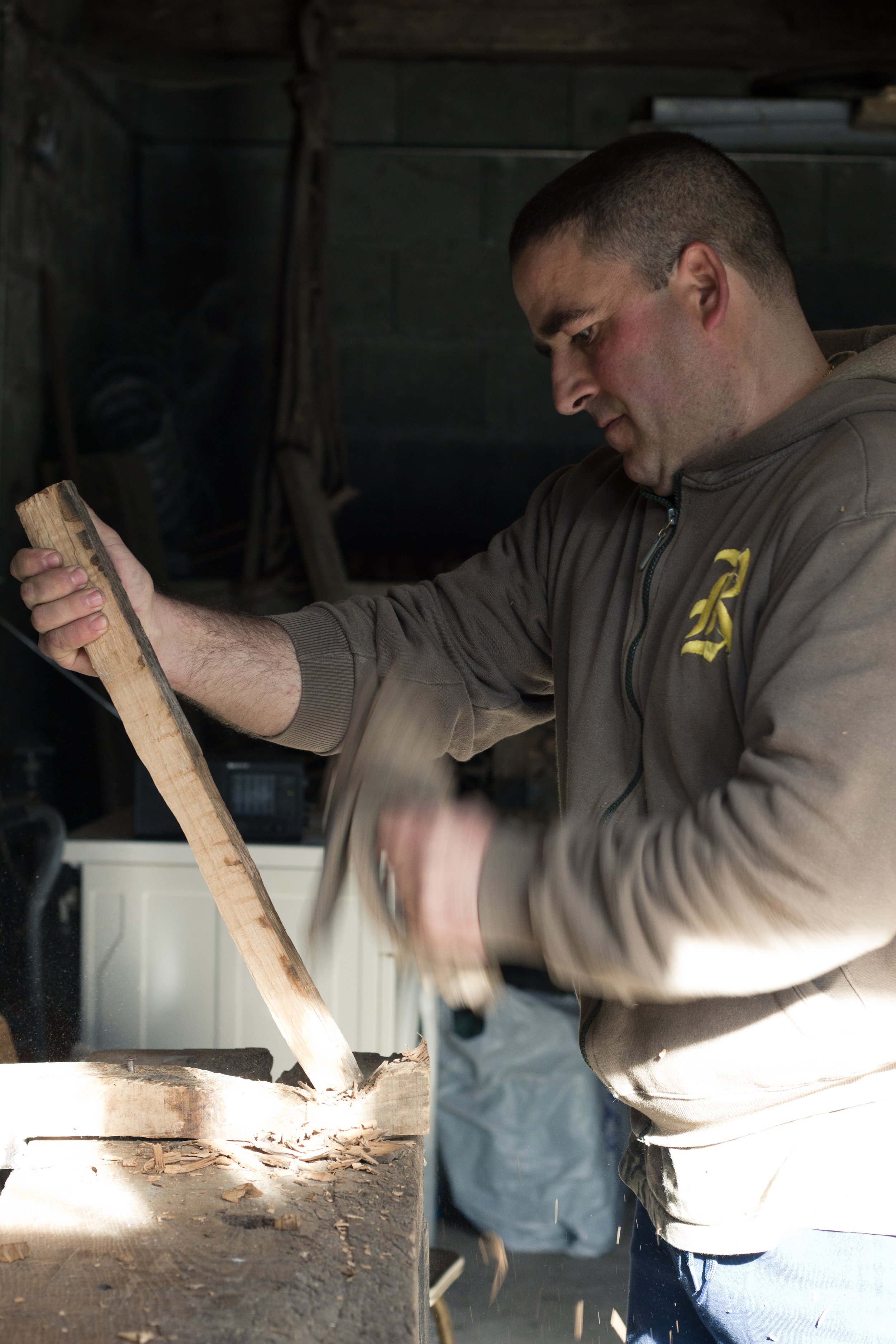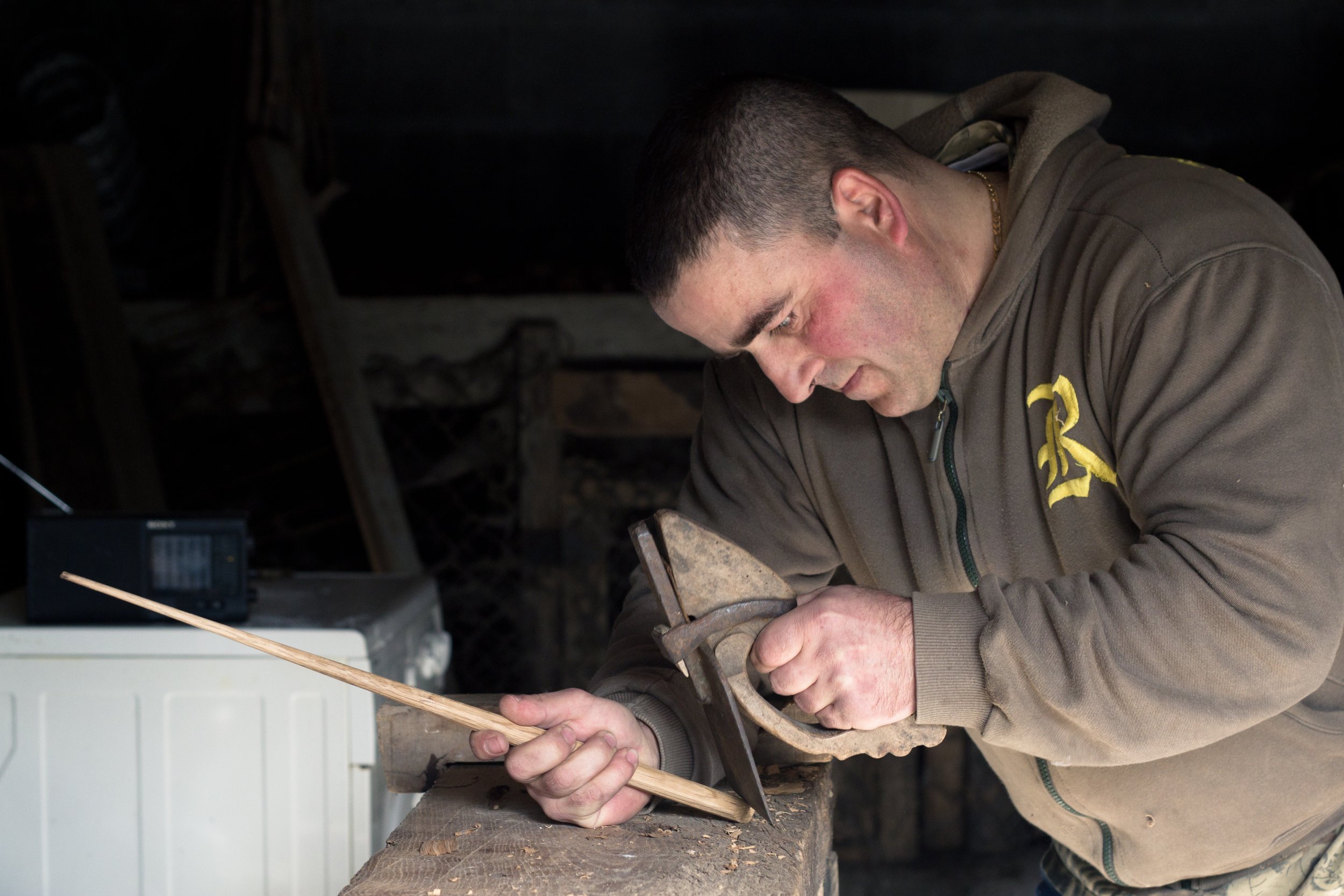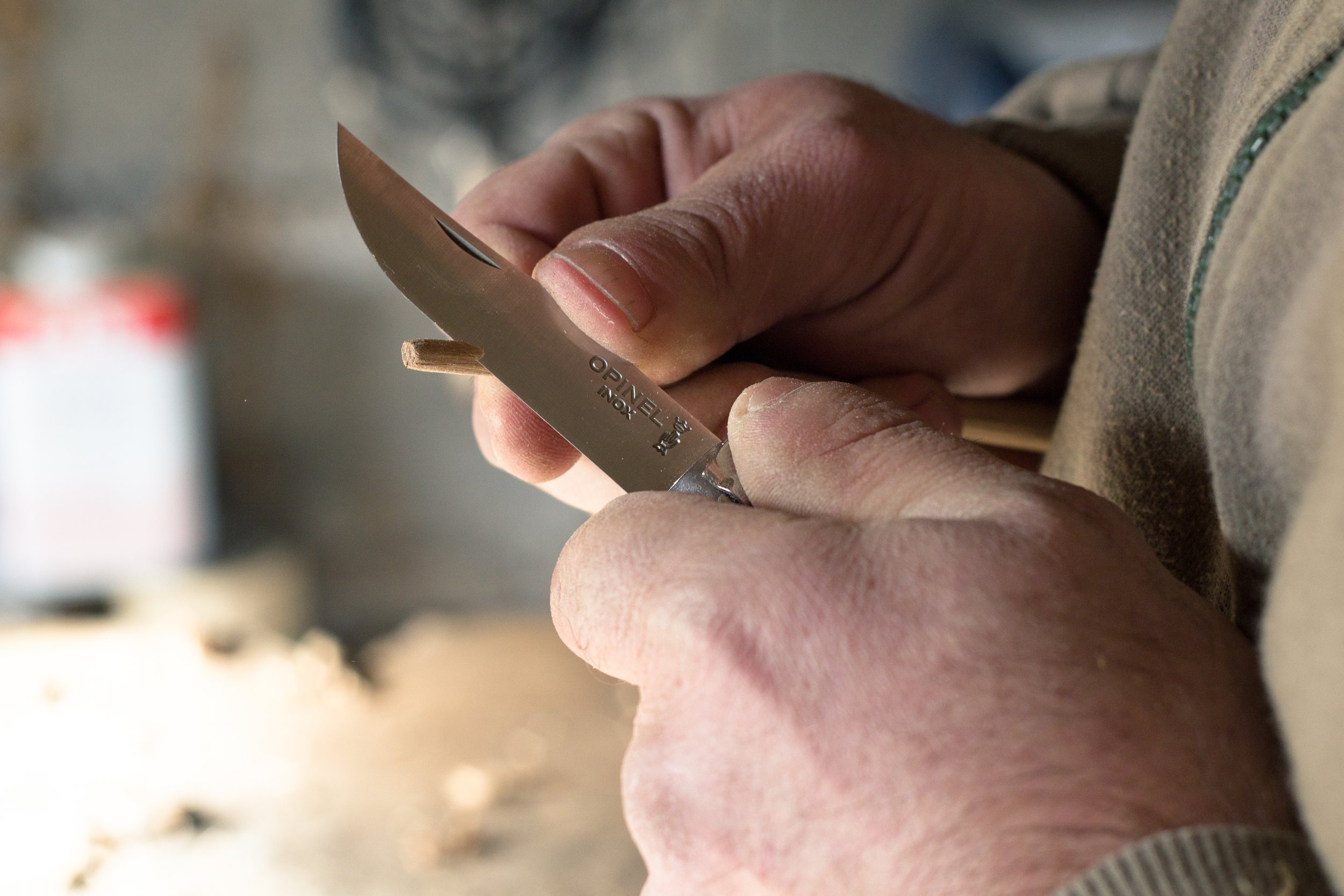Making a spindle with Zé Manel
When I started to learn how to spin wool, it became indispensable to get my own distaff and spindle. As I was lucky enough to learn from those who know what they are doing in regards to spinning, I was immediately informed about the characteristics of a good spindle: they’re made of oak, so that they may have the appropriate weight, they are handsculpted from beginning to end and they have a well-defined screw on the tip. Moreover I was informed that the person who knew how to make them well was Zé Manel, no more than Ilídia’s son. Convincing Zé Manel to show me his work took longer than I expected, but later in the day I spent with his mother washing the wool, I finally persuaded him to make me a pair of spindles.
1. CHOPPING THE LOG
If the oak log is well chopped, two spindles can be made out of it. The log is chopped in one swift movement, perfectly vertical and following the wood grain so that it is possible to sculpt it until the end without the tip breaking off.
2. SHAPING THE SPINDLE
After chopping the log, it’s time to shape it with the adz. It should be cut while being rotated, so as to guarantee the equilibrium of the piece. When the trunk is smaller, closer to the final thickness of the spindle, a fillister is used to keep shaping it, now more precisely and towards a traditional conical form. On the narrow end, the screw that holds wool thread, will be sculpted.
3. SCULPTING THE BOTTOM
Again with the adz, an overall shape is given to the bottom of the spindle. After contouring it with a pocket knife, the shape is tuned with a chisel.This end is wider and heavier than the tip, making it more effective when it comes to stretching and twisting the wool fibers.
4. SANDING
Having achieved the final shape of the spindle, it's necessary to sand it. First, Zé Manel uses a finer sandpaper and afterwards, a piece of glass to smooth the surface.
5. SCULPTING THE SCREW
The screw at the narrow end of the spindle is an essential detail for this tool to duly work, because it is here that the thread will be fixed, so it will spin the fibres properly.
6. TESTING
A good spindle, not only grabs the thread that is being spun so it may be done while suspended in the air, it also spins in an almost perfectly concentric way. That is why in the end Zé Manel tests the spindle by hanging it in a thread and spinning it on to itself. If necessary, the screw is corrected, but the experience that allows him to do perfectly concentric spindles using only an adz and a fillister is the same one that allows him to do perfect screws at the first attempt.



































